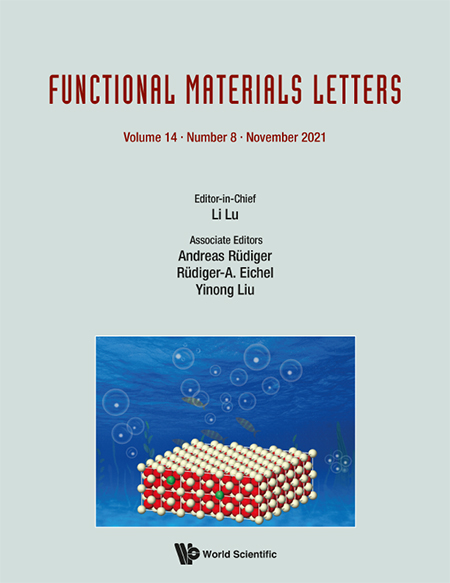Artificial neural network (ANN)-based optimization of a numerically analyzed m-shaped piezoelectric energy harvester
Abstract
In this research work, the M-shaped cantilever piezoelectric energy harvester is modeled and optimized using advanced artificial intelligence algorithms. The proposed harvester adopts a single structure geometrical configuration in which two secondary beams are being connected to the principal bimorph. Finite element analysis is carried out on COMSOL Multiphysics to analyze the efficiency of the proposed energy harvester. The influence of frequency, load resistance, and acceleration on the electrical performance of the harvester is numerically investigated to enhance the bandwidth of the piezoelectric vibrational energy harvester. Numerical analysis is also utilized to obtain the iterative dataset for the training of the artificial neural network. Furthermore, a genetic multi-objective optimization approach is implemented on the trained artificial neural network to obtain the optimal parameters for the proposed energy harvester. It is observed that optimization using modern artificial intelligence approaches implies nonlinearities of the system and therefore, machine learning-based optimization has shown more convincing results, as compared to the traditional statistical methods. Results revealed the maximum output values for the voltage and electrical power are 15.34 V and 4.77 mW at 51.19 Hz, 28.09 k, and 3.49 g optimal design input parameters. Based on the outcomes, it is recommended to utilize this reliable harvester in low-power micro-devices, electromechanical systems, and smart wearable devices.
References
- 1. , Renew. Energy 145, 2271 (2020). Crossref, Web of Science, Google Scholar
- 2. , Renew. Energy 146, 2430 (2020). Crossref, Web of Science, Google Scholar
- 3. , Renew. Sustain. Energy Rev. 137, 110473 (2020). Crossref, Web of Science, Google Scholar
- 4. , Renew. Energy 36, 2641 (2011). Crossref, Web of Science, Google Scholar
- 5. , Vibration based piezoelectric energy harvesting-a review, Proc. IOP Conf. Series Mater. Sci. Eng. (IOP Publishing, 2020), Vol. 995, p. 12007. Crossref, Google Scholar
- 6. , Sensors 20, 3512 (2020). Crossref, Web of Science, Google Scholar
- 7. , Mater. Today Proc. 43, 65 (2020). Crossref, Google Scholar
- 8. , Sensors 20, 77 (2020). Crossref, Web of Science, Google Scholar
- 9. , Renew. Energy 172, 551 (2021). Crossref, Web of Science, Google Scholar
- 10. , Int. J. Energy Res. 44, 1179 (2020). Crossref, Web of Science, Google Scholar
- 11. , Smart Mater. Struct. 29, 75001 (2020). Crossref, Web of Science, Google Scholar
- 12. , Mater. Today Proc. (2020) (in press). Google Scholar
- 13. , J. Korean Phys. Soc. 73, 330 (2018). Crossref, Web of Science, Google Scholar
- 14. , J. Electron. Mater. 48, 6487 (2019). Crossref, Web of Science, Google Scholar
- 15. , Sci. Adv. 5, eaax1782 (2019). Crossref, Web of Science, Google Scholar
- 16. , Shock Vib. 2014 (2014). https://doi.org/10.1155/2014/930503. Google Scholar
- 17. , Energy Convers. Manag. 206, 112503 (2020). https://doi.org/10.1016/j.enconman.2020.112503. Crossref, Web of Science, Google Scholar
- 18. , Appl. Energy 190, 368 (2017). Crossref, Web of Science, Google Scholar
- 19. , Smart Mater. Struct. 24, 55021 (2015). https://doi.org/10.1088/0964-1726/24/5/055021. Crossref, Web of Science, Google Scholar
- 20. , Smart Mater. Struct. 30, 45008 (2021). Crossref, Web of Science, Google Scholar
- 21. , Shock Vib. 2018, (2018). https://doi.org/10.1155/2018/5037187. Google Scholar
- 22. , Sensors 17, 329 (2017). Crossref, Web of Science, Google Scholar
- 23. , Ceram. Int. 43, 7374 (2017). Crossref, Web of Science, Google Scholar
- 24. ,
Electromechanical degradation of piezoelectric patches , Analysis and Modelling of Advanced Structures and Smart Systems (Springer, 2018), pp. 35–44. Crossref, Google Scholar - 25. , Three-axis MEMS piezoelectric vibrational energy harvester, Proc. 2017 ASEE Northeast Sec. Conf. 2017. Google Scholar
- 26. , Energies 14, 2498 (2021). Crossref, Web of Science, Google Scholar
- 27. , Sensors 18, 804 (2018). Crossref, Web of Science, Google Scholar
- 28. , J. Sound Vib. 484, 115521 (2020). Crossref, Web of Science, Google Scholar
- 29. , A study on piezoelectric buoy energy harvester based on orthogonal experimental design, Proc. 2019 IEEE Int. Conf. Power Intel. Comput. Syst. (ICPICS) (IEEE, 2019), pp. 611–614. Crossref, Google Scholar
- 30. , Alexandria Eng. J. 59, 117 (2020). Crossref, Web of Science, Google Scholar
- 31. , A quick review of machine learning algorithms, Proc. 2019 Int. Conf. Machine Learning, Big Data, Cloud and Parallel Computing (COMITCon) (IEEE, 2019), pp. 35–39. Crossref, Google Scholar
- 32. , Adv. Sci. Technol. Res. J. 13, 76 (2019). Crossref, Web of Science, Google Scholar
- 33. , Design and optimization of a low- resonant-frequency piezoelectric MEMS energy harvester based on artificial intelligence, Proc. Multidisciplinary Digital Publishing Institute Proceedings; 2, 930 (2018). Google Scholar
- 34. , Integr. Ferroelectr., 204, 91 (2019). Google Scholar
| Remember to check out the Most Cited Articles! |
|---|
|
Check out New Titles in Materials Science and Nanotechnology |


